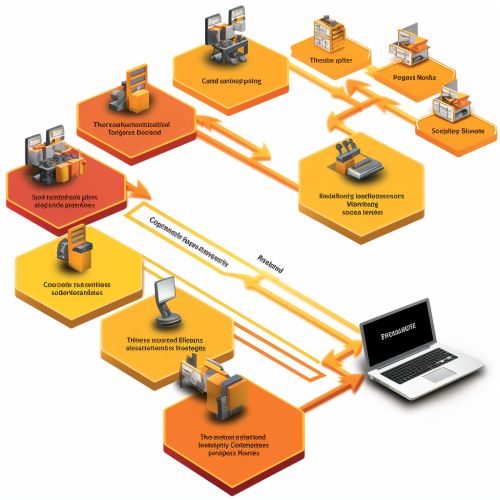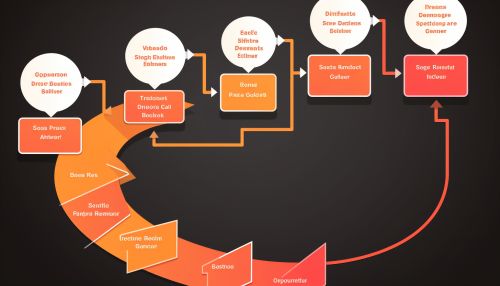Software Development
Overview
Software development is the process of conceiving, specifying, designing, programming, documenting, testing, and bug fixing involved in creating and maintaining applications, frameworks, or other software components. It is a process of writing and maintaining the source code, but in a broader sense, it includes all that is involved between the conception of the desired software through to the final manifestation of the software, sometimes in a planned and structured process[1](https://www.britannica.com/technology/software).


History
The history of software development goes back to about 1810 when Joseph Marie Jacquard developed looms that used punched paper cards to represent program instructions for weaving intricate designs[2](https://www.computerhistory.org/babbage/engines/). The concept of software development was further developed in the 1940s and 1950s with the advent of electronic computing machines.
Software Development Process
The software development process, also known as the software development life cycle (SDLC), is a structure imposed on the development of a software product. It is a detailed plan describing how to develop, maintain, replace and alter or enhance specific software[3](https://www.sciencedirect.com/topics/computer-science/software-development-process).


Planning
Planning is the most fundamental and critical organizational phase. The main focus here is on the scope of the software and its boundaries[4](https://www.projectsmart.co.uk/white-papers/why-is-project-management-important.pdf).
Analysis
In this phase, the performance of the software at various stages and its functionality in terms of the users’ requirements are analyzed[5](https://www.sciencedirect.com/science/article/pii/S1877050915003436).
Design
Design is the phase where software engineers actually program the code for the project[6](https://www.sciencedirect.com/science/article/pii/S1877050915003436).
Implementation
During this phase, the software design is translated into source code[7](https://www.sciencedirect.com/science/article/pii/S1877050915003436).
Testing
In this phase, the software is tested for defects and discrepancies[8](https://www.sciencedirect.com/science/article/pii/S1877050915003436).
Deployment
After the code is appropriately tested, it is approved for use (or sometimes for beta testing)[9](https://www.sciencedirect.com/science/article/pii/S1877050915003436).
Maintenance
In this phase, the software undergoes various modifications and updates[10](https://www.sciencedirect.com/science/article/pii/S1877050915003436).


Software Development Models
There are several models for such processes, each describing approaches to a variety of tasks or activities that take place during the process[11](https://www.sciencedirect.com/topics/computer-science/software-development-model).
Waterfall Model
The waterfall model is a linear sequential flow. In this model, the next phase is started only after the defined set of goals are achieved for the previous phase and it is signed off, so the name "Waterfall Model"[12](https://www.sciencedirect.com/science/article/pii/S1877050915003436).
Spiral Model
The spiral model is similar to the incremental model, with more emphasis placed on risk analysis[13](https://www.sciencedirect.com/science/article/pii/S1877050915003436).
Agile Model
The agile model is a combination of iterative and incremental process models with a focus on process adaptability and customer satisfaction by rapid delivery of working software product[14](https://www.sciencedirect.com/science/article/pii/S1877050915003436).


Software Development Methodologies
Software development methodologies are the frameworks used to structure, plan, and control the process of developing an information system[15](https://www.sciencedirect.com/topics/computer-science/software-development-methodology).
Scrum
Scrum is an agile way to manage a project, usually software development[16](https://www.sciencedirect.com/science/article/pii/S1877050915003436).
Extreme Programming (XP)
Extreme Programming (XP) is a software development methodology which is intended to improve software quality and responsiveness to changing customer requirements[17](https://www.sciencedirect.com/science/article/pii/S1877050915003436).
Lean
Lean software development is a translation of lean manufacturing principles and practices to the software development domain[18](https://www.sciencedirect.com/science/article/pii/S1877050915003436).


Software Development Tools
Software development tools are computer programs that developers use to create, debug, maintain, or otherwise support other programs and applications[19](https://www.sciencedirect.com/topics/computer-science/software-development-tool).
Integrated Development Environments (IDEs)
An integrated development environment (IDE) is a software application that provides comprehensive facilities to computer programmers for software development[20](https://www.sciencedirect.com/science/article/pii/S1877050915003436).
Version Control Systems (VCS)
Version control systems are a category of software tools that help a software team manage changes to source code over time[21](https://www.sciencedirect.com/science/article/pii/S1877050915003436).
Debuggers
A debugger or debugging tool is a computer program that is used to test and debug other programs[22](https://www.sciencedirect.com/science/article/pii/S1877050915003436).


Conclusion
Software development is a complex process that requires careful planning, execution, and maintenance. It involves various stages, models, methodologies, and tools that are all essential to the successful development of software applications.
See Also
Agile Software Development Software Testing Software Engineering
